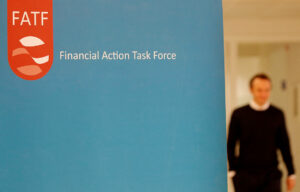Oct. 18, 2019. — REUTERS
THE PHILIPPINES may still be able to exit the “gray list” of the Financial Action Task Force (FATF) by October if it implements the necessary reforms, according to analysts.
This after the FATF kept the Philippines on the “gray list” of jurisdictions subjected to increased monitoring for “dirty money” risks. The Philippines has been on the list for three years or since June 2021.
The Anti-Money Laundering Council (AMLC) in a statement on Friday said that the country has “moved closer to exiting the FATF gray list.”
“We welcome FATF’s recognition of the country’s progress in strengthening its position in the global fight against financial crimes, even as we remain focused on addressing remaining action plan items,” AMLC Executive Director Matthew M. David said.
AMLC said it will continue to work on implementing its action plan to address remaining deficiencies.
Earlier this year, President Ferdinand R. Marcos, Jr. directed all concerned agencies to work on efforts to exit the list by October.
The FATF on Friday said that the Philippines has taken “significant steps towards improving its anti-money laundering and counter financing of terrorism (AML/CFT) regime.”
FATF President T. Raja Kumar at a press briefing on Friday said that the country has “continued to demonstrate steady progress,” citing increased money laundering investigations and prosecutions.
“We actually had a senior person from the Philippines present at the FATF Plenary demonstrating the Philippines’ strong political commitment to essentially continue its progress on this front,” he said.
Mr. Kumar said the country should “quickly address” the remaining items on its action plan. “The Philippines has actually taken action on 15 of the 18 action items that it needed to act on.”
The remaining items that need to be implemented include “demonstrating that supervisors are using AML/CFT controls to mitigate risks associated with casino junkets; applying cross-border measures to all main sea/airports including detection of false declarations of currency and confiscation action in line with risk; and demonstrating an increase in the prosecution of TF cases in line with risk.”
Data from Moody’s showed that from 2018 to 2023, the Philippines was among the top five countries in Southeast Asia with money laundering activity events added over the five-year period.
The number of money laundering events added in the Philippines increased by 45% from 2022 to 2023.
“The achievability of ‘exiting the list’ by October will depend on the course of action to be taken by the government,” Antonio A. Ligon, a law and business professor at De La Salle University in Manila, said in a Viber message.
Filomeno S. Sta. Ana III, coordinator of Action for Economic Reforms, said that the October deadline is achievable, but the government must step up to implement the needed reforms.
“We have been on the gray list for years because the government has refused to take bold action… just do it. Implement the FATF recommendations,” he said via Facebook Messenger chat.
Mr. Ligon said that the Philippines’ inclusion in the gray list is a serious matter as it affects the country’s reputation.
“The government’s sincere effort to be out of the list should be supported by relevant sectors so it will improve our financial standing in the global community,” he added.
The FATF Plenary, which is the organization’s decision-making body, usually meets in February, June and October.
In 2002, the FATF blacklisted the Philippines for having no legal anti-money laundering framework. It was removed from the blacklist in 2003 after the passage of the Anti-Money Laundering Act. — Luisa Maria Jacinta C. Jocson






